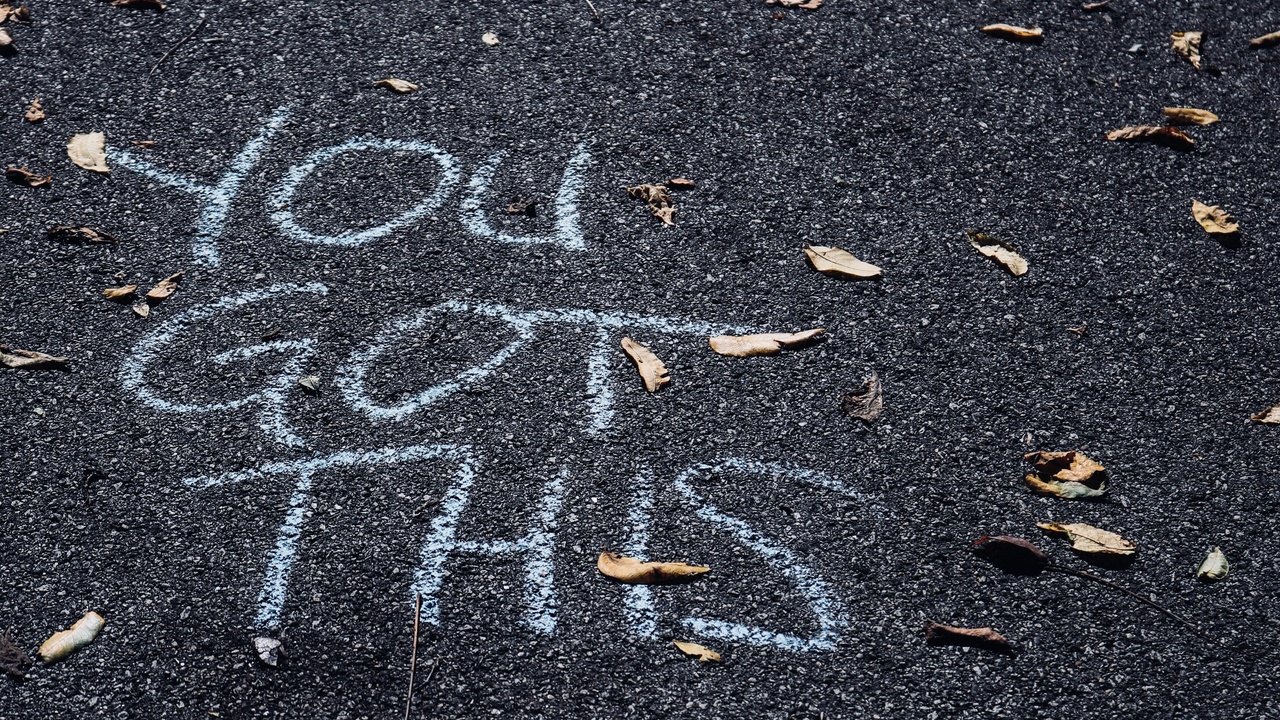
My question today is, “When you’re out of sorts, are you productive? Are you able to lead well?”
When we’re feeling stressed out, we’re not showing up as our best selves.
I recognize that it’s difficult right now.
A phrase that I often use when I’m facing difficult times is, “This too shall pass.”
Years ago when I first moved to New York City, I moved here without a job and a network, and I felt lonely. I didn’t know what the next right action was so I was taking all sorts of actions, and that easily led to overwhelm.
I remember this visceral moment when I was standing in my galley kitchen. I was living in a studio apartment at that time, and it was a dark space since it didn’t have any direct sunlight. I was standing in that kitchen – my thoughts were racing, and I was trying to figure out if I regretted my move to NYC.
“Should I have moved here? What if this was the wrong decision?” The thoughts were spiraling out. I remember taking a few deep breaths, putting my hand to my heart, and repeating to myself, “This too shall pass.”
And the racing thoughts immediately just went silent as I repeated that phrase to myself. It’s a phrase that I use even now when I’m facing difficult times. It helps me to be calm – an essential quality in leadership.
There’s many external stressors so it’s easy to get dysregulated. If you’re freaking out, distracted, overwhelmed, then you’re not going to strive. And you’re going to end the day feeling frustrated because you weren’t able to put a dent into your to-do list.
So it’s crucial how you lead yourself before you can lead others, and this is where being calm comes in.
Being calm is a skill that can be learned.
It’s not simply a personality trait. I’ll admit that when folks describe me, being laid back and calm are probably personality traits that they would use.
However, before my inner work journey, yes, on the external level, I came off as calm, but the internal was telling a different story. Whenever I got stressed, my thoughts would race out of control, my heartbeat would accelerate, and I would feel that tension.
And I reacted in two different ways, I either isolated or I vented and complained. Those behaviors have their time and place, but I was stuck in those two modes, which isn’t productive nor helpful. It’s not solution-oriented to be stuck in a venting, complaining energy.
Being calm is also a needed skill in order to be productive.
When I use the term, ‘productive,’ I’m not talking about the hustle and the grind – the go, go, go energy. Instead, I’m talking about feeling like we’re making progress on the things that matter.
And especially for those who are doing difference-making work, our long-term goals are often many years in the future. So we have to figure out, “What are those daily tasks that’ll move the needle on making progress towards our mission?”
Because if we don’t feel like we’re making a difference on a daily basis, then after a while it gets disheartening, and we figure “Why even bother?”
Being calm is an essential quality within the organizational culture. There’s two types of culture – an individual culture like internal workings, and then there’s the organizational culture. Organizational cultures do not strive in urgency.
I’ve found that there are often false deadlines. I remember one time when I was working within an operations role, I had my to-do list, and my boss called me that morning saying, “Hey, I need you to get the website updated. I need it done, like now, if not yesterday.”
Since this request came with such urgency, then obviously my to-do list took a back seat and I had to get done what she needed. I worked diligently and got it done by the end of the day.
I emailed her letting her know that it was done and to take a look. She took a few days to respond with feedback. That felt very frustrating because I questioned the initial urgency.
Let’s start asking what are real deadlines and not. When you’re on the receiving end of false urgency, it can be demoralizing and detrimental to the team culture because it can lead to feelings of unappreciation and resentment.
We all can shift cultures regardless of our roles. It’s easy to stay connected to our values when things are going well, but we’re really tested in the chaos. So how to infuse calmness into an organization in order to make better strategies and decisions?
I want to share 4 ideas on creating and deeping that calmness within ourselves and our organizations.
1. Cultivate stillness with meditating, journaling, taking deep breaths, drinking your coffee in silence. It’s about not jumping right into work in the morning by checking your phone first thing. It’s being intentional in how you start your work day. Taking time to reflect what’s on your agenda – what are the things you want to get done that day. When we check our emails and notifications at the start of the day, then we’re automatically on other people’s agendas. Meaning that you get an email from a board member or a staff member, then immediately you start thinking about how to respond and what needs to be done. You’ve forgotten about your own list. So instead, set the intention to cultivate stillness and strive not to check your phone first thing. The benefits of being still are better sleep, less burnout, less overwhelm and stress. When you cultivate that stillness, then you’ll also immediately know when something’s off, and you’ll be able to course-correct.
2. Block times. When we operate in a reactive mode – i.e. checking emails often, having a couple of meetings, responding on Slack, jumping into the emails again, we’re all over the place. We have to remember that we were hunters and gatherers – very focused, very one task at a time for survival. Multitasking is a myth. When I was an Executive Director, I left Fridays for no meetings – that was my admin day of being able to sit, slowly respond to emails, strategizing – being able to have that stillness to figure out “what’s going well, what’s not?” I was able to plan for the upcoming week. It’s helpful to block out time for specific tasks – for meetings, emails, strategy, grant writing, etc. Each task takes different skill sets and mindsets so try to block a day or half-day of similar activities. It comes down with being intentional.
3. Deep work & Resets. I believe that deep work, a phrase popularized by Cal Newport in “Deep Work,” is critical in staying calm and making progress on the things that matter. Deep work is when you’re focused on one activity. You don’t have multiple tabs open, you’ve turned notifications off on your phone, and you’re not being pinged constantly. I strive for at least three to four sessions of deep work a day. That means 50 minutes focused on one task, and then 5 to 10 minutes of resets. You’ll be surprised how distracted you can be in those 50 minutes and tempted to check your email or surf the Internet. For instance, if you’re tasked with writing a grant report, you may actually only spend 20 minutes writing and the other 30 checking emails and texting. Instead, doing deep work is a practice and takes time to deepen. We get exhausted throughout the day because we’re sedentary. This is where the resets come in. After 50 minutes of deep work, reset by standing up, taking a few deep breaths, getting a glass of water, jumping up and down a few times to get energized. My practice is to stand up, close my eyes, and bounce off the balls of my toes 10 times while taking deep breaths. Because our eyes are on screens a lot, it’s good to reset them by closing your eyes. By taking these resets, you’ll find that you’re not as exhausted because you’ve moved and given your eyes a break throughout the day.
4. Know your Capacity. After starting the practice of cultivating stillness, block times, and deep work & resets, then we come to the final and most important idea – know your capacity. You’ll start recognizing where you’ve taken on too much. Knowing your capacity is the kindest thing you can do for yourself. By taking on too much, then all the practices to deepen our calmness will go out the door. Having too much to do is NOT sustainable. There’s often a feeling that’s how we’ve always done things. This concept isn’t helpful – instead strive to be objective and look at the organization’s work. Take a look at the organization’s activities through the lenses of impact and effort. Make decisions about what the organization wants to do more of, stop doing, and do less of. This is an exercise that can be done twice a year. Be ok with saying no. And if you’re not in a leadership role, then speak with your manager about what’s within your capacity. We often assume that they know the pressure we’re under, instead we’ve got to speak up about our boundaries and set limits. The overwhelm comes when we’re feeling like we’re not making progress on the things that matter, so take time to know your capacity.
As a quick summary, cultivate stillness, block times, deep work & resets, and know your capacity are the four ideas on deepening calmness within yourself and your organization.
Until next time, as always, be gentle and kind to yourself.
Shalini

